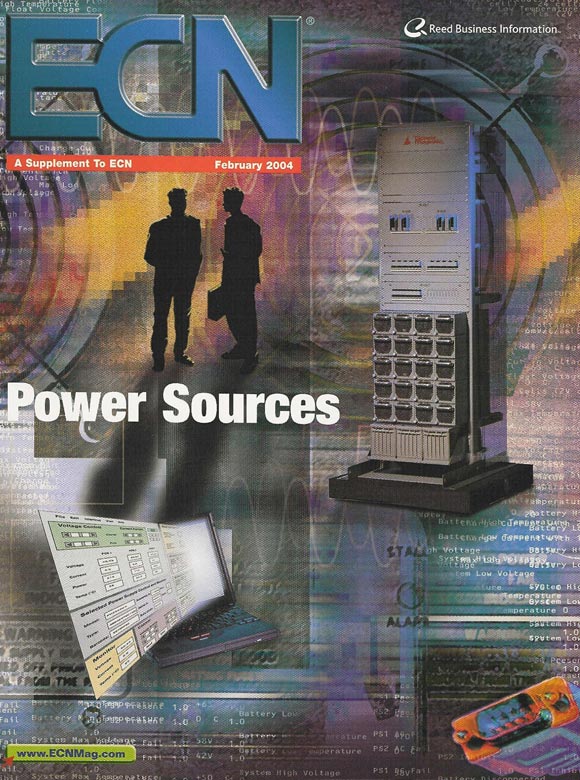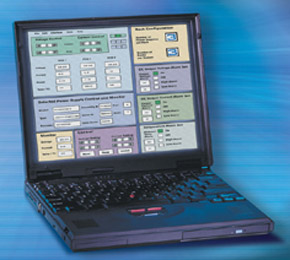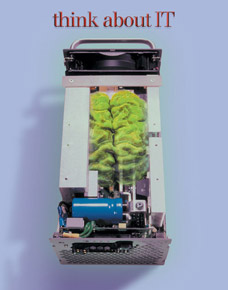|
|
Pioneer Magnetics will post “White Papers” when the need arises and/or when PMI feels that it has something to share that will benefit the industry at large.

What is an? And has it Arrived?
by Adam Rosenstein and Lonnie Friend, Pioneer Magnetics -- , 2/1/2004
 Until recently, power supplies have been brute-force devices that have been pretty much deaf, dumb and blind. They have been able to communicate with the systems they serve only with difficulty and in a rudimentary manner. The power supply industry has begun to provide more intelligence in their products, but in a piecemeal fashion and in reaction to specific needs of particular markets. So, communication protocols and operating standards have not emerged, leaving customers to fend for themselves to develop and support hardware and software interfaces. The effect has been to increase system development costs and lengthen time-to-market cycles. Until recently, power supplies have been brute-force devices that have been pretty much deaf, dumb and blind. They have been able to communicate with the systems they serve only with difficulty and in a rudimentary manner. The power supply industry has begun to provide more intelligence in their products, but in a piecemeal fashion and in reaction to specific needs of particular markets. So, communication protocols and operating standards have not emerged, leaving customers to fend for themselves to develop and support hardware and software interfaces. The effect has been to increase system development costs and lengthen time-to-market cycles. Intelligence is desirable in any high-reliability system. It was first employed in telecom applications to help solve the difficulty of their remote locations. Applications have expanded to include system servers, semi-conductor test and process control equipment, broadcast, fuel cell sites and any application that requires a high degree of system availability and failure avoidance. Due to the diverse needs of these applications, there is as equally diverse definition of what intelligence is, depending on one's perspective and the markets served.
 |
The Intelligent Power Supply (IPS) Interface is a PC-based windows software program. |
|
What Is Intelligence?
The real question is one of what intelligence in a power supply or system should be able to do. In an ideal world, the truly Intelligent Power Supply (IPS) will be able to:
·Communicate: Power supplies are analog devices and communicate via analog and TTL signals to provide system status information and control. The systems they serve are predominately digital, and communications between them and the power supply are achieved with difficulty. Without a vendor-supplied intelligent interface, the customer is faced with the prospect of designing and implementing his own custom hardware and software protocol. The ideal IPS should be able to communicate with the system and the outside world directly via all standard protocols including I2C, RS232, RS485, CAN and TCP/IP to name just a few. |
·Control: The IPS should permit easy local and remote command and control without extensive software development on the part of the system's integrator. The commands should be intuitive and user-friendly. This "plug-n-play" capability avoids the typical development process required to integrate "intelligent" power into an "intelligent" system. Finally, the IPS should be completely programmable, permitting full adjustment of output voltage and current as well as enabling/disabling of the power system itself.
·Monitor: The IPS should be able to provide digital information describing all operating parameters, including input voltage, output voltage, output current, internal temperature, fan operation, logged power-on hours and a myriad of other attributes that indicate its general health.
·Provide Alarms and Failure Avoidance: The IPS should be able to issue alarms and take steps to save itself and the system from coming down. For example, the IPS should:
1. Issue a warning when internal temperatures become too high. This may be caused by higher than normal ambient temperature or a clogged fan filter. In any event, the IPS must be able to signal that attention is needed.
2. Issue a warning if the input voltage approaches a dangerously low point. When the input voltage becomes too low to support the load, the non-intelligent power supply will shut down to save itself. This results in system crashing.
 |
The Intelligent Power Supply (IPS) allows the user to remotely control and monitor all power supply functions and to record data for tracking purposes. |
Most importantly, in both of these examples, the IPS should be able to take steps to control the situation until help arrives without allowing the system crash that usually occurs. In these conditions, the IPS should intelligently de-rate itself and adjust its operation in reaction to changing conditions. This is truly intelligent and analogous to a running man who decides to walk because he is tired yet must continue his journey.
Industry Progress
Has the truly intelligent power supply arrived? It has in the form of Pioneer Magnetics' ICON™ technology that accomplishes all of the above and more. ICON is available over Pioneer's entire product line from a 1 kW rectifier to a megawatt power system.
The rest of the industry has not by any means been standing still. Many suppliers have developed, to varying degrees, some aspects of the IPS. Cherokee, Power One and others have released some specific products that provide I2C, RS232 and other protocols. Argus, a provider to the telecom industry, offers a micro-controlled rectifier that addresses certain specialized needs. And Lambda has introduced its "Vega SmartPlus" product line.
The power supply industry is paying attention to and trying to anticipate its customers' needs and taking steps to meet them. What is certain in our minds is that the micro-processor will continue to play an ever-increasing role in that regard.
About the author |
Adam Rosenstein is Director, Strategic Systems Development |
©2021 Pioneer Magnetics |

